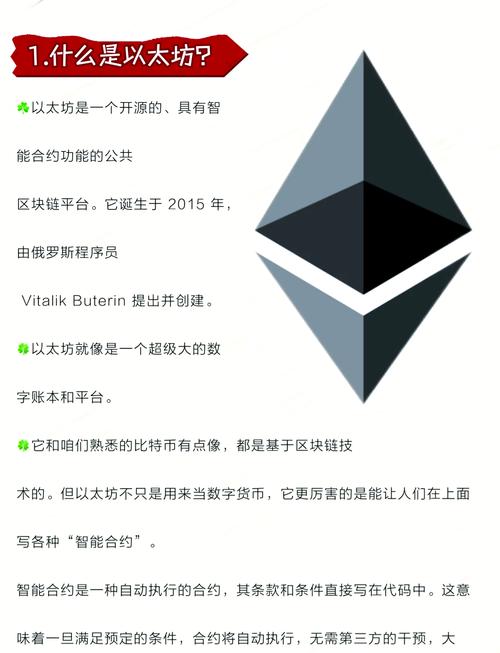Ethereum 2.0 Sharding: A Comprehensive Guide
Ethereum, the second-largest cryptocurrency by market capitalization, is undergoing a significant upgrade with Ethereum 2.0. One of the most anticipated features of this upgrade is sharding. In this article, we will delve into what sharding is, how it works, and its potential impact on the Ethereum network.
What is Sharding?
Sharding is a technique used to improve the scalability of a blockchain network. It involves dividing the network into smaller, more manageable pieces called “shards.” Each shard processes a subset of transactions, reducing the overall load on the network and enabling it to handle more transactions per second.

How Does Sharding Work?
Here’s a simplified explanation of how sharding works in Ethereum 2.0:
-
The Ethereum network is divided into 64 shards, each with its own validator set.
-
Nodes in the network are randomly assigned to a shard, and they only process transactions related to that shard.
-
Validators on each shard are responsible for validating transactions and adding them to the blockchain.

-
Once a transaction is validated, it is propagated to other shards, ensuring that all shards have a consistent view of the blockchain.
Here’s a table summarizing the key aspects of sharding:
| Aspect | Description |
|---|---|
| Shards | Smaller, more manageable pieces of the network |
| Validator Sets | Groups of nodes responsible for validating transactions on each shard |
| Transaction Processing | Transactions are processed by validators on their respective shards |
| Consistency | Shards communicate with each other to ensure a consistent view of the blockchain |
Benefits of Sharding
Sharding offers several benefits to the Ethereum network:
-
Scalability: By dividing the network into smaller pieces, sharding allows the Ethereum network to handle more transactions per second, addressing the current scalability issues.
-
Decentralization: Sharding helps maintain the decentralized nature of the Ethereum network by distributing the workload across multiple shards.
-
Security: With more validators on each shard, the network becomes more secure against attacks.
-
Cost Efficiency: Sharding reduces the cost of transaction fees, as validators only need to process transactions on their respective shards.
Challenges of Sharding
While sharding offers numerous benefits, it also presents some challenges:
-
Complexity: Implementing sharding requires significant changes to the Ethereum network, which can be complex and time-consuming.
-
Consensus Mechanism: Ensuring consensus across multiple shards can be challenging, as each shard operates independently.
-
Interoperability: Sharding may create interoperability issues between different shards, as they operate independently.
Timeline and Roadmap
The Ethereum 2.0 sharding upgrade is expected to be completed in several phases:
-
Phase 0: This phase focuses on the beacon chain, which is the foundation for sharding. It is expected to be launched in 2020.
-
Phase 1: This phase introduces sharding, with the goal of increasing the network’s transaction capacity. It is expected to be launched in 2021.
-
Phase 2: This phase focuses on improving the network’s security and interoperability. It is expected to be launched in 2022.
Conclusion
Ethereum 2.0 sh
